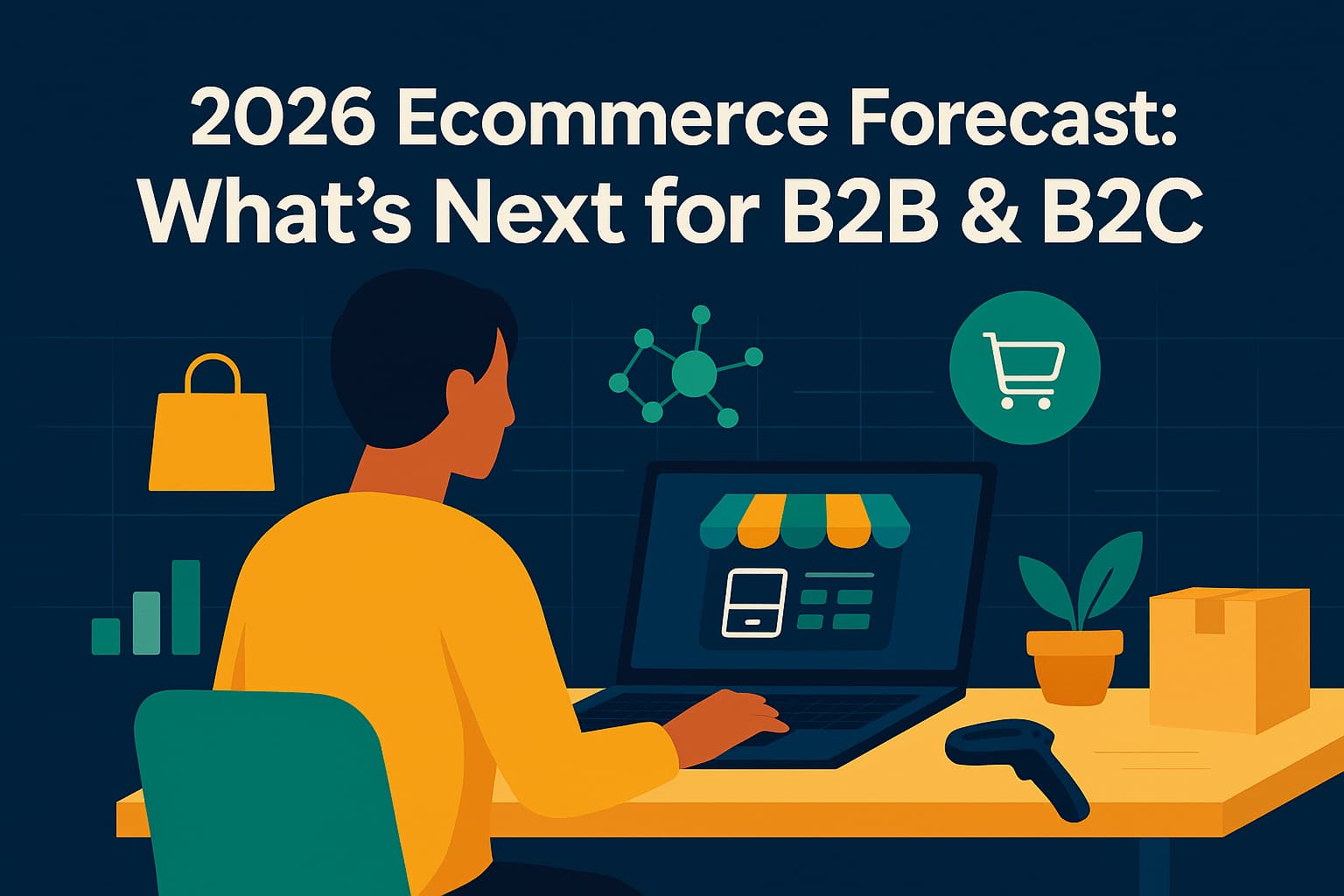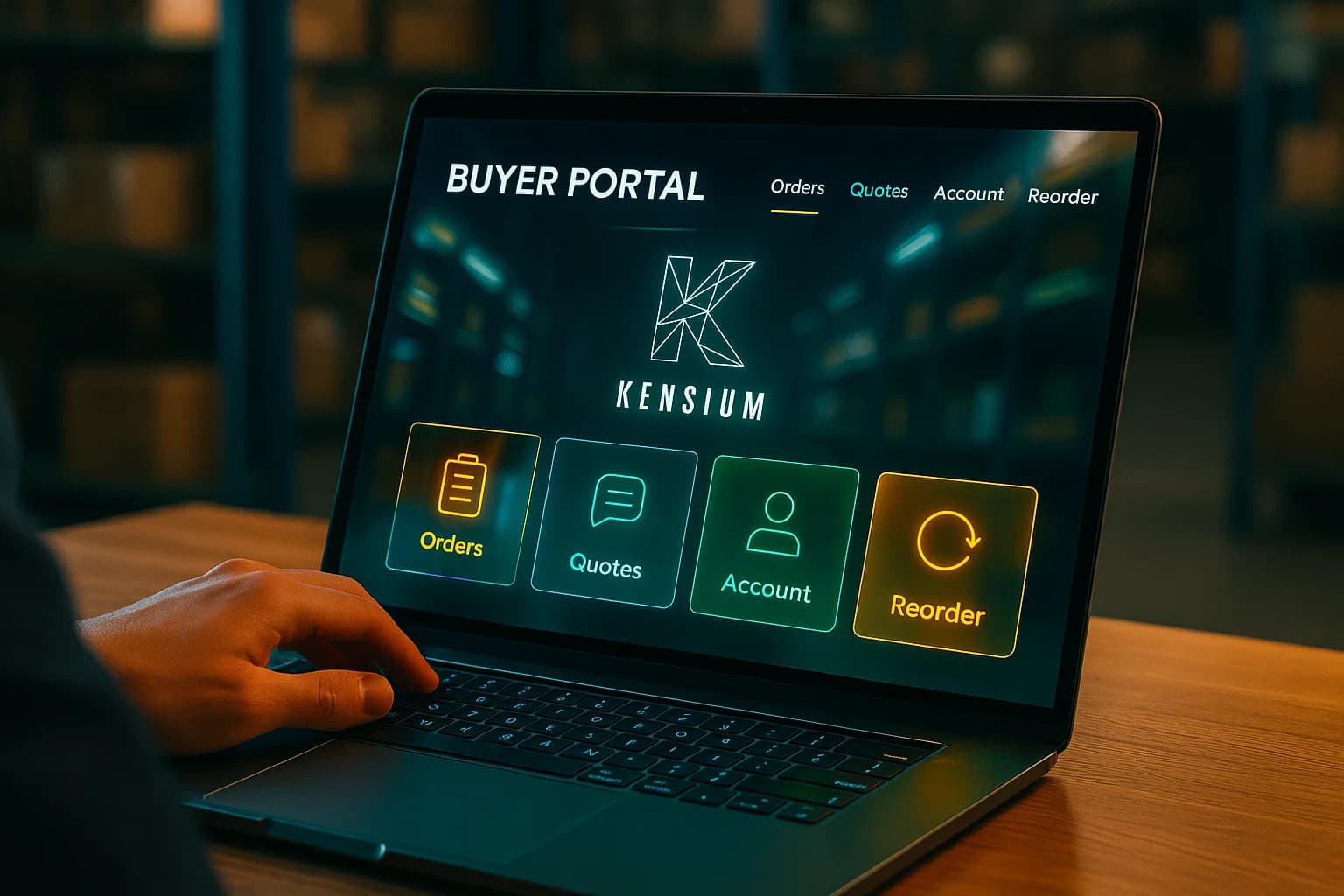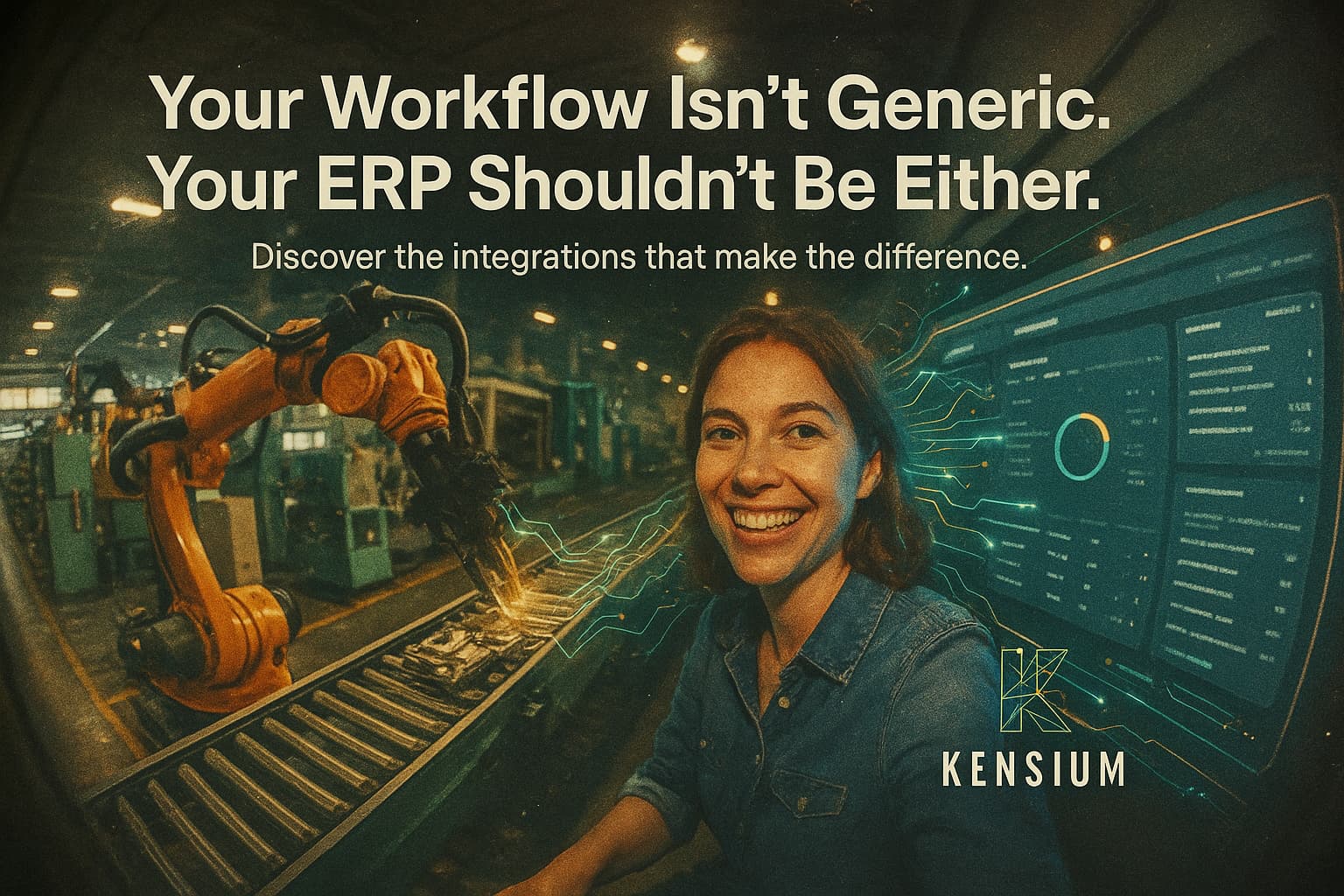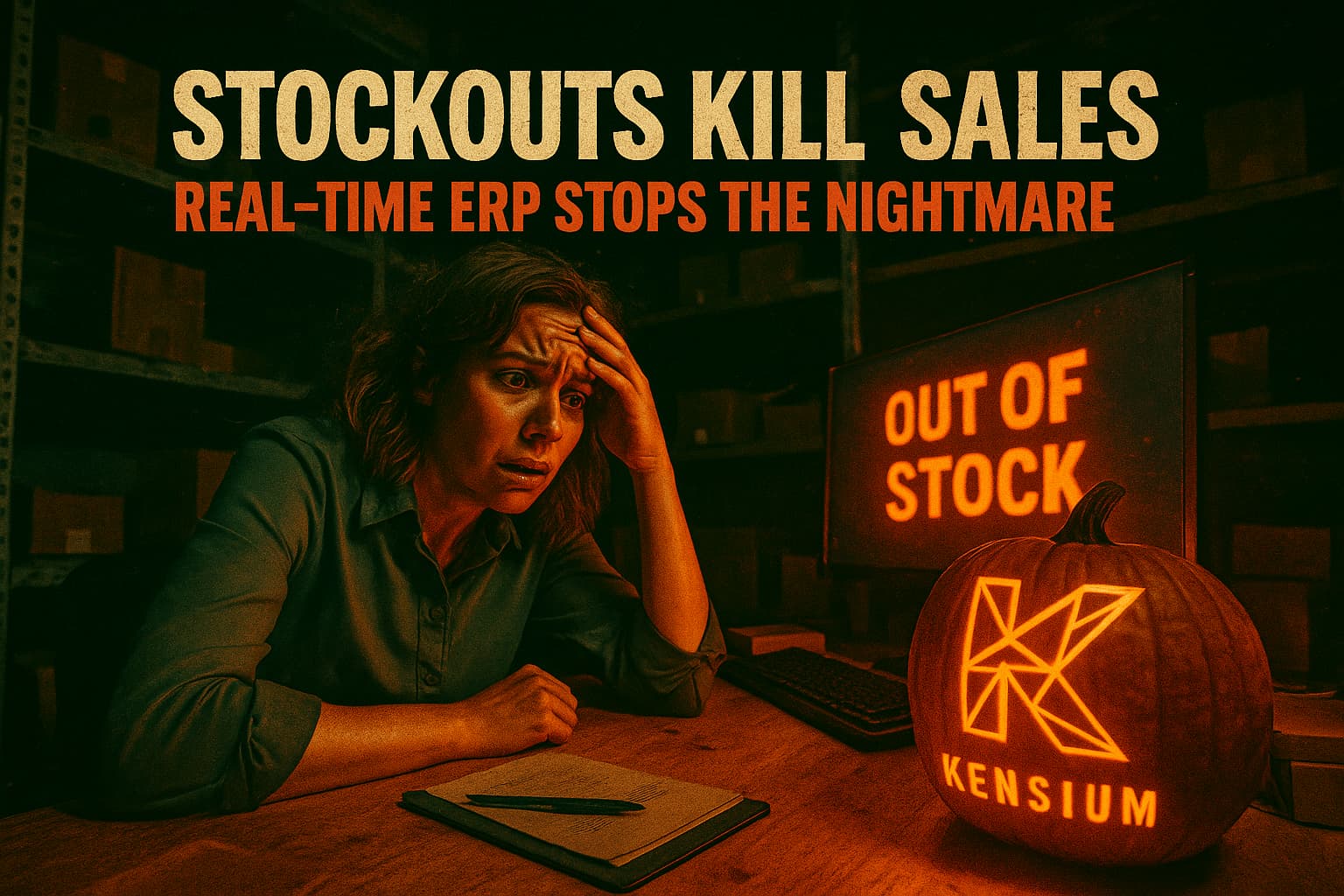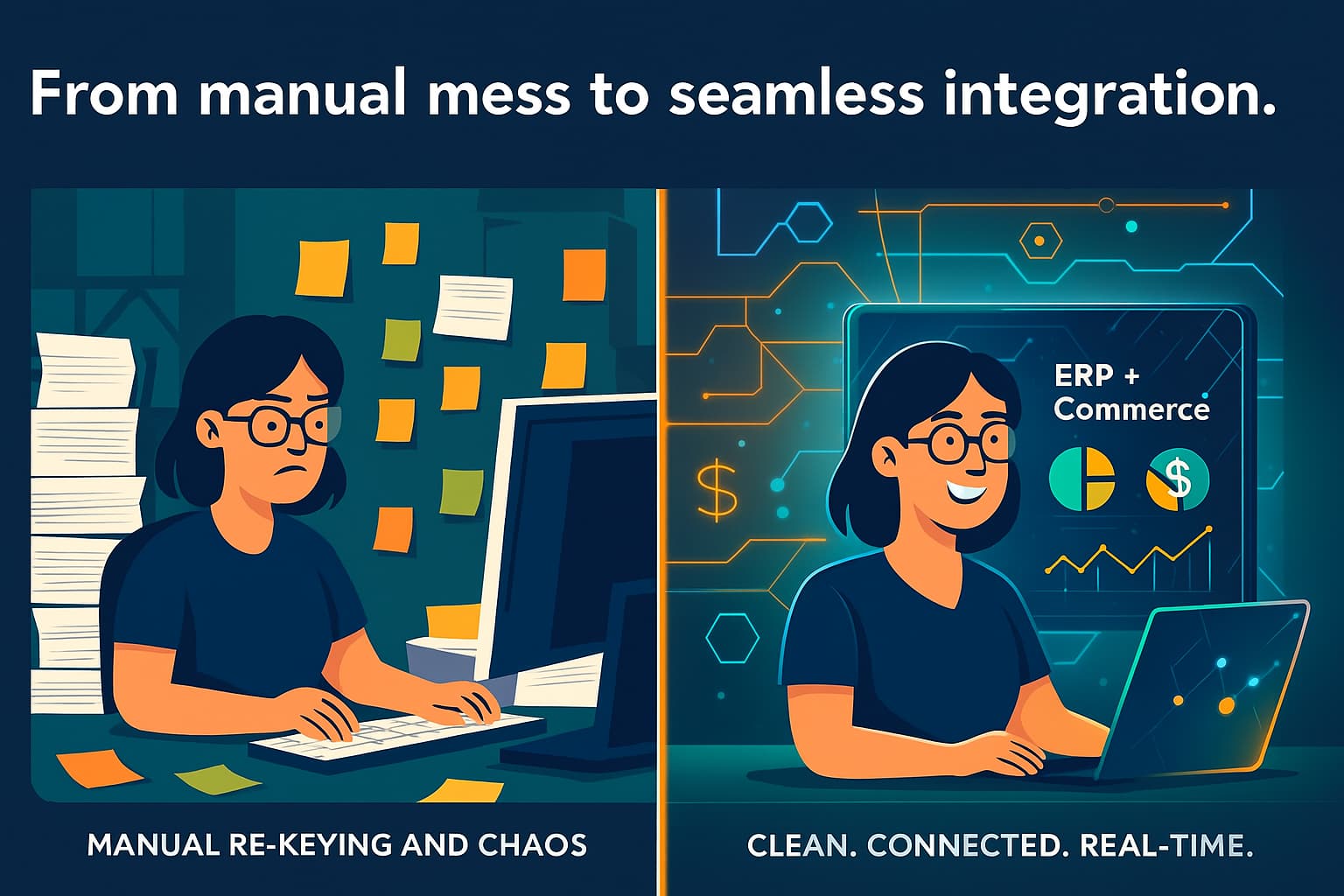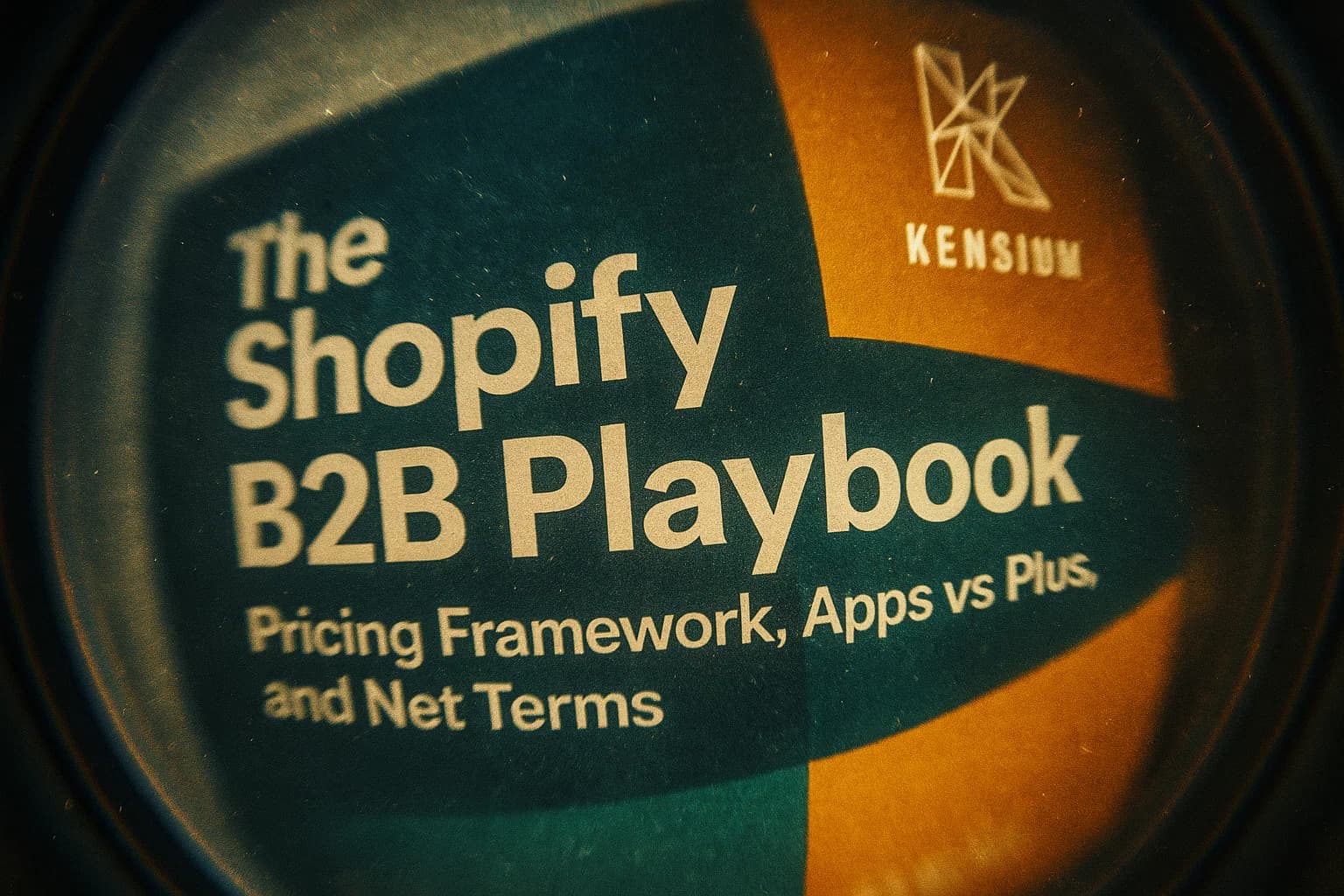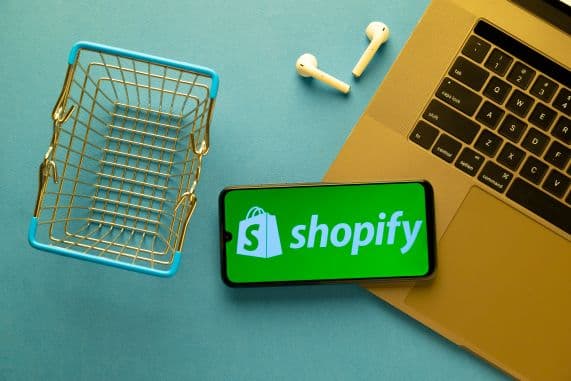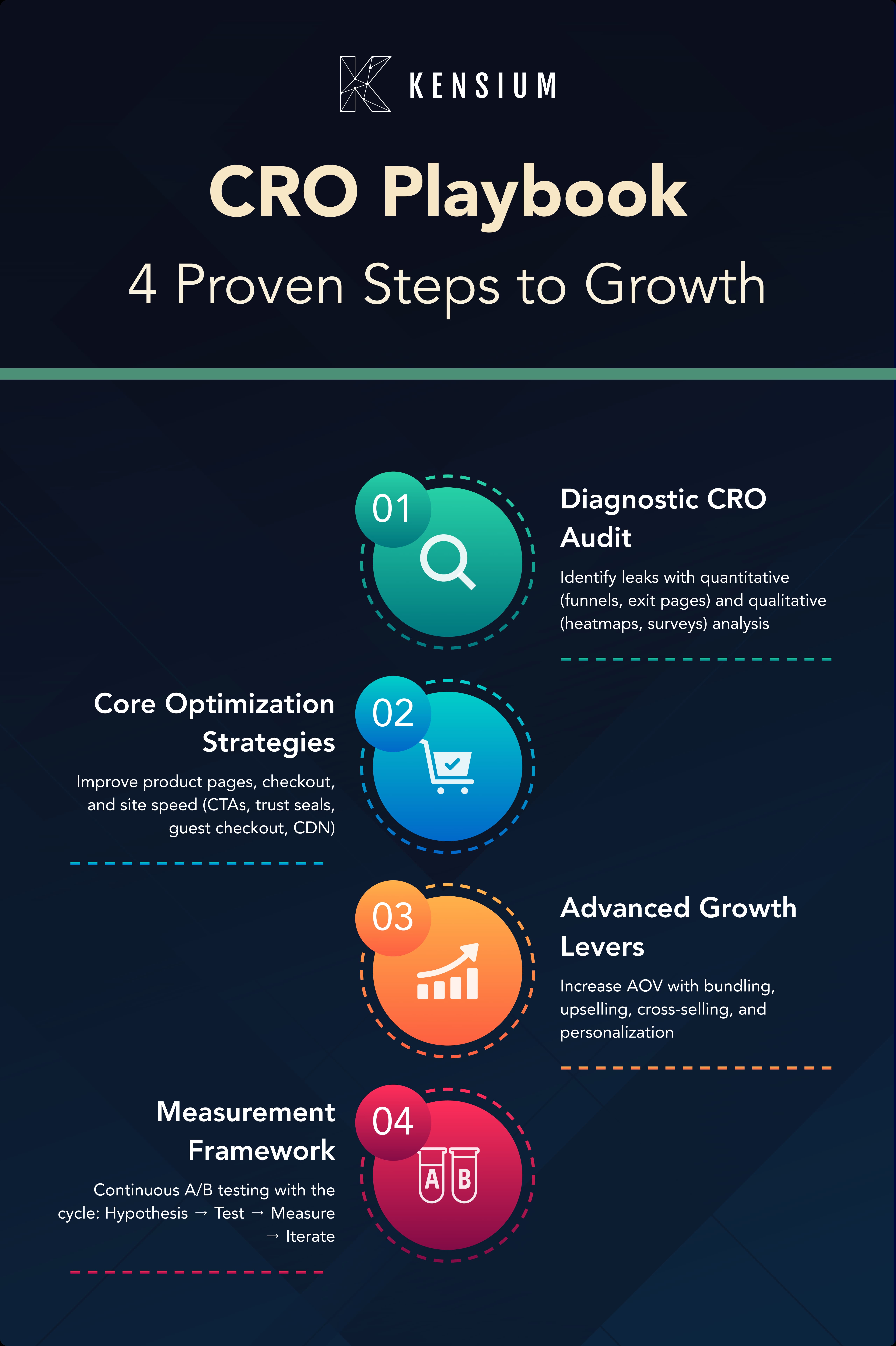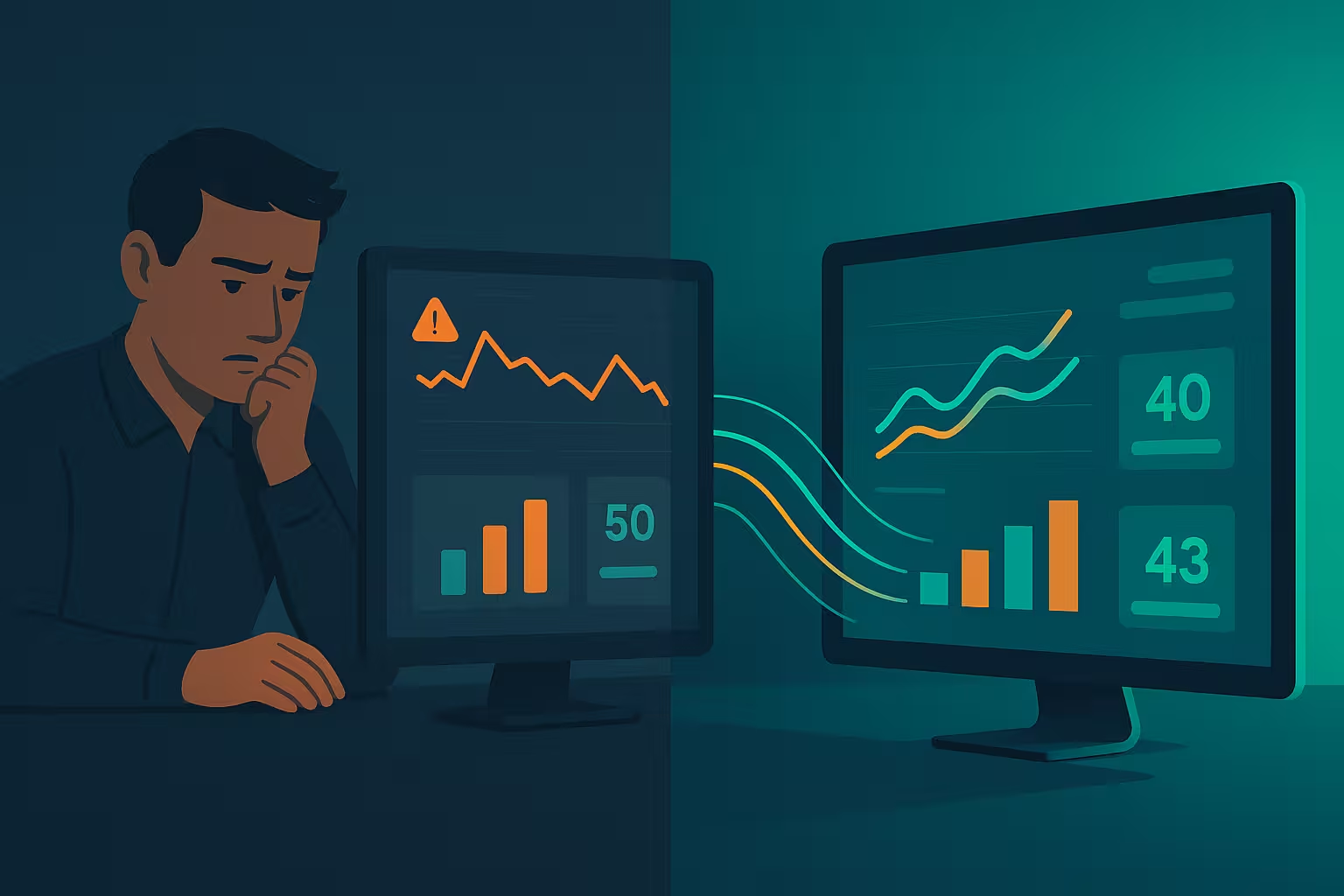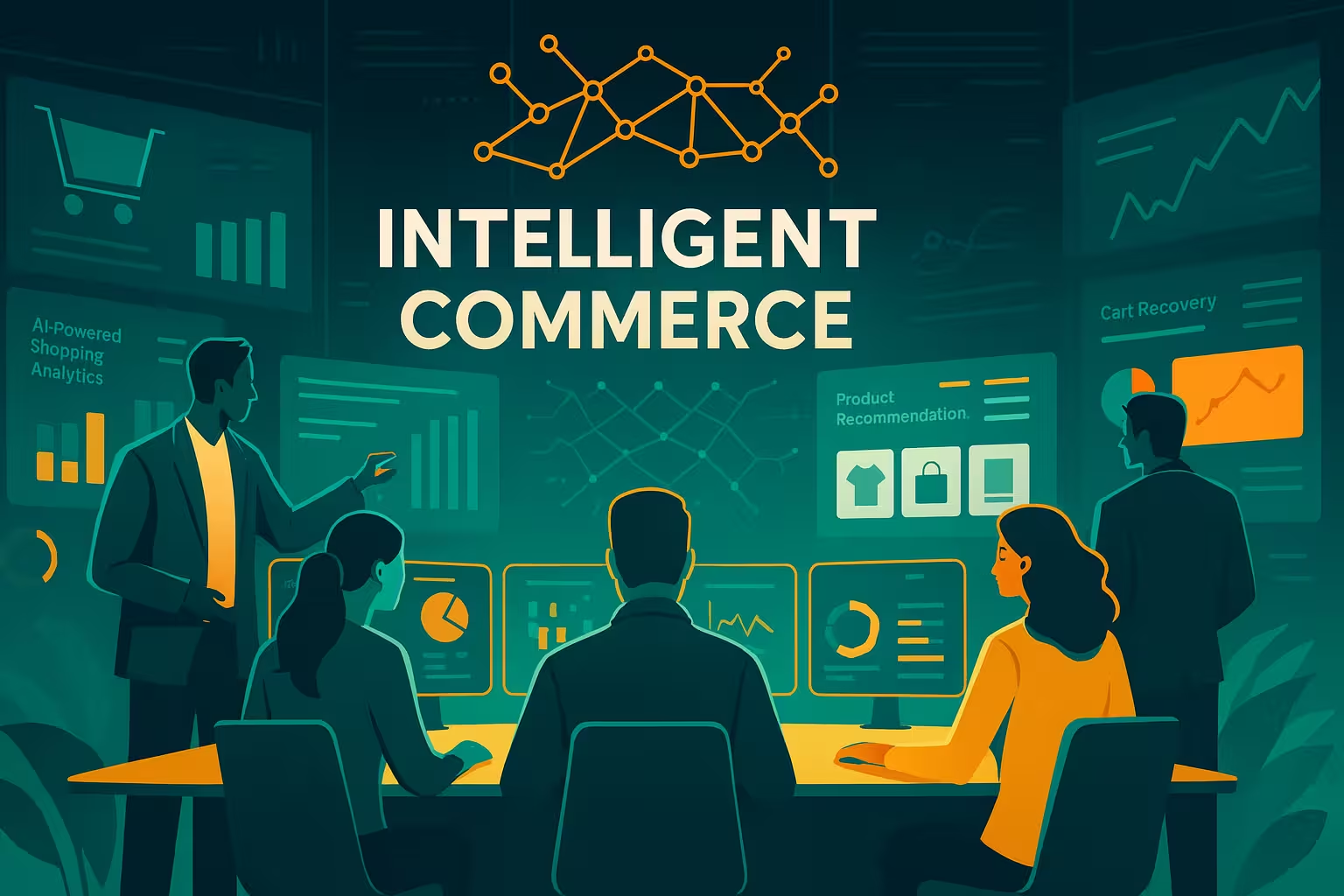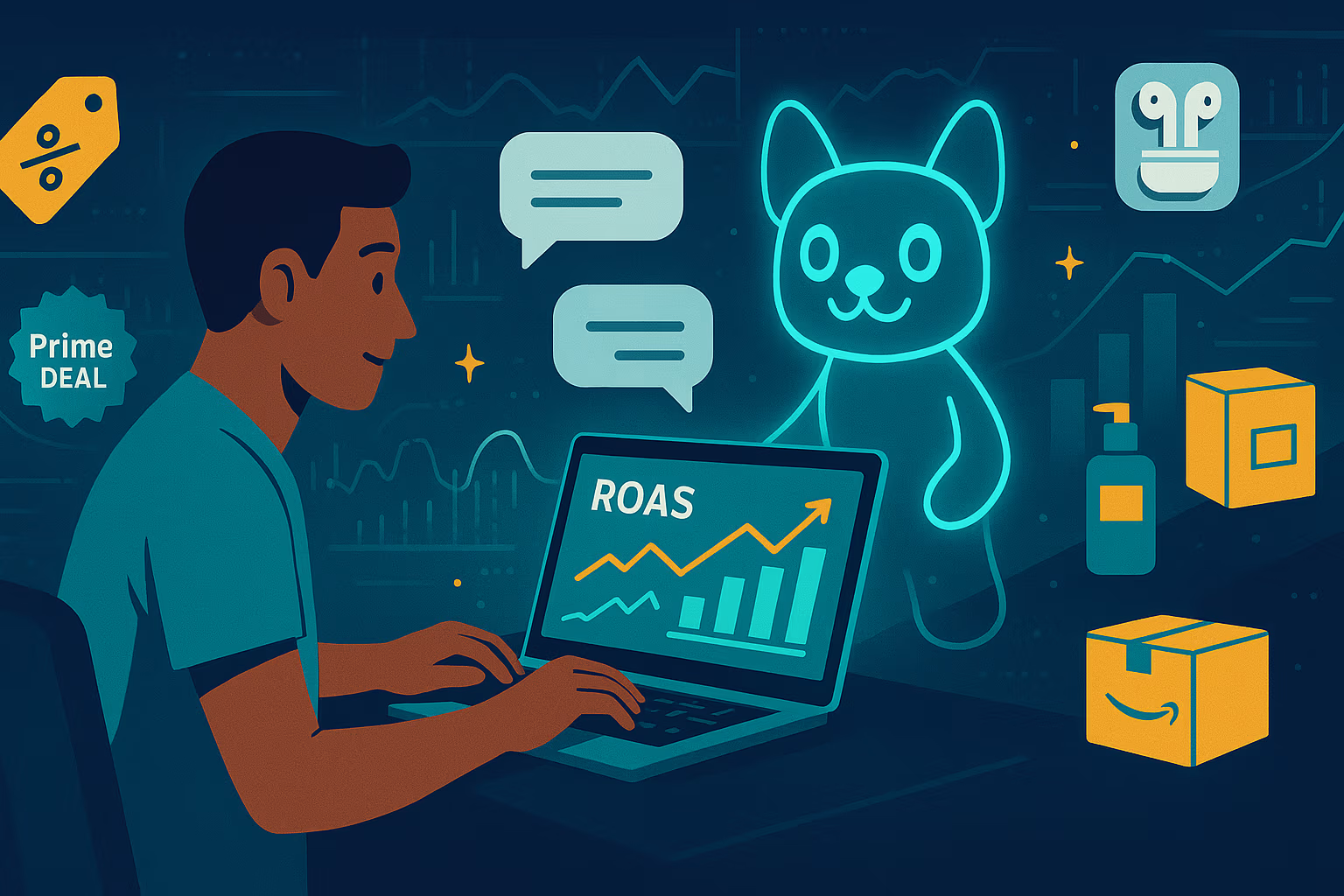
Integrating your e-commerce platform with an ERP system is a critical step toward unified commerce operations. Whether you use Shopify, Adobe Commerce, or BigCommerce, a successful integration can synchronize data (orders, inventory, customers, etc.) and eliminate manual work. We asked our Kensium experts for guidance on common technical questions about e-commerce–ERP integrations. Below, we provide a Q&A style overview addressing the how-tos – from choosing between direct APIs versus middleware, to deciding on real-time vs. batch updates. (As an agency specializing in e-commerce and ERP connectivity, Kensium has extensive experience building platform-specific connectors and integration solutions[1].)
QUESTION: What are the main approaches to connecting an e-commerce platform with an ERP?
Kensium Experts: There are a few integration methods you can consider, each with its own pros and cons:
- Direct API Integration (Point-to-Point): This means using the e-commerce platform’s API and the ERP’s API to send data back and forth directly. It’s often custom-built for your needs. Pros: Real-time data exchange and no third-party in between. Modern e-commerce APIs (e.g., Shopify’s, Adobe Commerce’s, BigCommerce’s) allow instant transfer of orders, inventory, etc.[2]. Cons: You’ll need development resources to write and maintain the integration, and you must handle error retries or data mapping yourself. If not designed carefully, point-to-point links can be brittle as systems update over time.
- Integration Middleware or iPaaS: This involves a middle layer or service (could be an integration platform or even a staging database) that sits between the store and ERP. The middleware can pull data from one system, transform it, and push to the other. This approach decouples the systems and provides a buffer. One developer on Reddit, for example, suggested a “middleware pattern: eCommerce → staging DB → ERP,” which adds a buffer for data transformations and retry logic[3]. Pros: Offers more control over data flow (you can queue and retry failed transactions), and often comes with pre-built connectors or a friendly interface. Cons: It introduces an additional component to manage, and may add cost if using a third-party integration service. It’s most useful in complex scenarios or when the systems don’t natively talk well to each other.
- Pre-built Connectors or Extensions: These are ready-made integration modules provided by software vendors or solution partners (like Kensium’s own connectors for Adobe Commerce, BigCommerce, and more). A connector is a packaged solution that already knows how to sync specific data fields between the e-commerce platform and a particular ERP. For instance, Adobe Commerce’s official guidance notes you might use the platform’s API, the ERP’s native integration capabilities, or a third-party solution with a pre-built integration process[4]. Pros: Faster implementation – a “proven, extensively tested connector” can dramatically accelerate your integration[5]. These often handle the common data mappings out-of-the-box (products, inventory, orders, etc.), and are tested for reliability. Cons: They may need licensing or only work with certain ERP versions. Also, if your business has very unique requirements, you might still need some customization on top of the connector.
In summary: Small businesses or simpler use cases might start with direct API integrations, but as complexity grows, a middleware or specialized connector becomes invaluable for scalability and error handling. Our team often evaluates your specific systems to recommend the best-fit approach. (For example, Kensium has platform-specific connectors – like our Adobe Commerce–Acumatica Connector and BigCommerce–Acumatica Connector – which provide seamless, real-time data exchange between the storefront and ERP[6][7].)
QUESTION: Should we sync data in real-time or run batch updates on a schedule?
Kensium Experts: This is one of the most important considerations, and the answer “depends on what your use case is”. In the words of one Reddit user: “Does it need real-time sync for all actions, or will daily/weekly sync suffice? The approach also depends on the ERP’s API availability.” In other words, determine how time-sensitive each data flow is – and what your systems can handle[8].
Here are some pointers to decide between real-time vs. batch integration:
- Real-Time Sync – Ideal for scenarios where up-to-the-minute accuracy is crucial. For example, inventory levels and pricing updates should be immediate if overselling or showing outdated prices would hurt your business. Modern shoppers (B2C and B2B) expect that if an item is out of stock, the website reflects that instantly. Leading platforms now support real-time integrations via APIs to meet these expectations[9]. Real-time means as soon as an order is placed or a stock level changes, the data is pushed to the other system. Benefit: Customers and staff always see current information. Trade-off: It can put more load on your ERP – your ERP must be capable of handling frequent API calls, or you might hit rate limits. Ensure your ERP system (and network) can handle the traffic and that you have error-handling (e.g., retries) for occasional hiccups.
- Batch (Scheduled) Sync – This means data is collected and transferred at intervals (e.g. every 15 minutes, hourly, or nightly). Historically, many e-commerce integrations were batch-based, syncing orders or inventory once a day[10]. Benefit: Less constant strain on systems; the ERP can process updates in chunks during off-peak times. If your ERP or e-commerce platform is older or has strict API limits, batching might be safer. Drawback: The data is stale between runs. This can lead to issues like overselling – for instance, selling more inventory during the day than you actually have, because the stock wasn’t updated until overnight[10]. Batch updates introduce a lag that might be unacceptable for fast-moving sales environments.
Recommendation: Use real-time updates for critical, fast-changing data (orders, stock levels, order status updates) whenever possible, as it provides a superior customer experience and operational agility[9]. If full real-time isn’t feasible (due to system limitations), consider a hybrid – e.g. near-real-time for key data and periodic sync for less critical data. Always check your ERP’s capabilities: if it has a robust API and can handle it, real-time integration greatly reduces delays and errors. If not, you might start with hourly or daily batch jobs as a workaround. In planning, define for each data type how frequently it should be updated between systems[11] – this ensures you strike the right balance between timeliness and system load.
QUESTION: What data should we integrate between the e-commerce platform and the ERP?
Kensium Experts: You’ll want to sync all the essential data that both systems need, to create a single source of truth. Key data flows include:
- Orders: Every order placed on the online store should be sent to the ERP (so the ERP can handle invoicing, fulfillment, financials). Likewise, order status updates (shipping, fulfillment, tracking info) from the ERP or warehouse should flow back to the e-commerce platform so customers can see their order progress.
- Inventory Levels: Your ERP typically manages inventory across warehouses. Integrate stock level updates from the ERP to the online store in real-time if possible. This way, the website won’t sell an item that the ERP knows is out of stock, preventing backorders and customer disappointment[12][13].
- Product Catalog and Pricing: If your ERP (or PIM system) is the master record for product info, you’ll want to push product data (names, SKUs, descriptions, prices) to the e-commerce platform. Conversely, if marketing teams update product content on the e-commerce side, that data might feed back into the ERP or at least need to be consistent. Decide which system is the source of truth for each type of product data. Many integrations set the ERP as the source for SKU and inventory data, and the website as the source for rich descriptions; but it varies. The goal is consistent product information across both systems. Kensium’s Adobe Commerce connector, for example, lets Acumatica ERP serve as the primary source for product details (categories, attributes, pricing, inventory) while ensuring the web store reflects those updates in real-time[6][14].
- Customer Data: If a new customer account is created on the e-commerce site, that should be sent to the ERP’s customer database. And if customer info (like address or credit terms) is updated in ERP, it should sync back to the e-commerce platform. For B2B, this is especially important so that your e-commerce portal and ERP agree on each customer’s details, pricing levels, and order history. A well-integrated system gives customers a unified experience, like viewing all their past orders, invoices, or quotes online, which the ERP provides[15][16].
- Payments and Invoices: Depending on your setup, payment transactions captured on the e-commerce site (or through online payment gateways) should register in the ERP’s financial module. Likewise, if the ERP issues invoices or credit memos, you may surface those through the website for customer self-service. For instance, Kensium’s BigCommerce connector syncs invoice and payment status from Acumatica ERP to the BigCommerce customer portal, so B2B customers can see their outstanding invoices and pay them online[17].
- Shipping and Tracking: After an order is fulfilled in the ERP or shipping system, send the shipment tracking number and status back to Shopify/Adobe Commerce/BigCommerce. This triggers customer notifications (e.g. “Your order has shipped”) and updates the order status on the front end. Integration ensures customers aren’t left in the dark about their shipments.
In short, any data that is created or updated in one system and needed in the other should be part of the integration. A robust integration will “facilitate seamless data exchange across stock items, categories, customers, orders, and shipments,” covering the full commerce cycle[18]. It’s also vital to plan data mapping: make sure that fields match up between systems (for example, the SKU in Shopify corresponds to the inventory item ID in ERP). Even with real-time sync, “systems still need to speak the same language,” so map fields like customer IDs or product codes correctly[19]. Often, pre-built connectors come with these mappings ready, but if you build custom, allocate time to define how each data element translates between the platform and ERP.
QUESTION: Do we need one-way or two-way integration? (Should data sync in both directions?)
Kensium Experts: In most cases, a bi-directional (two-way) integration is needed for true synchronization. One-way integration can leave one of the systems outdated. Here’s how we break it down:
- One-way integration means data flows only in one direction. For example, you might push e-commerce orders into the ERP, but not send anything back. This could work if, say, you only care about getting orders into the ERP for fulfillment and aren’t concerned with updating the website after. However, one-way setups are rare in practice because they create data silos. The store would not know about inventory changes, or the ERP might not know about new customers, etc., depending on which way data is flowing.
- Two-way integration means the e-commerce platform and ERP continuously exchange information in both directions. This is the ideal for a unified system: orders go to the ERP, and ERP updates (inventory, order status, product info) go back to the website. For example, after integration, Acumatica ERP and BigCommerce function in tandem – new web orders appear in Acumatica, and Acumatica’s inventory and pricing changes reflect on the BigCommerce store, all in real-time[7]. Two-way sync ensures each system has the latest data and your staff or customers can use either interface and get accurate information.
In planning your project, identify for each data type which system is the master. Often the ERP is master for inventory and financial records, and the e-commerce platform is master for the user-facing catalog or front-end interactions. But even then, changes need to propagate both ways (for example, an online order creates a record in ERP, and a price change in ERP updates the online price). Thus, virtually all Shopify/Adobe Commerce/BigCommerce to ERP connector solutions advertise bi-directional sync or at least an exchange that keeps both sides consistent[6].
One-way might be acceptable as a quick interim solution (for instance, just importing orders to ERP initially), but for long-term efficiency you will want to enable flows going both directions. This will eliminate manual import/export tasks. If you find certain data shouldn’t go both ways (like perhaps you only manage product data in ERP and never in the website), you can configure the integration to treat that as a one-direction flow. The key is that nothing stays stuck in one system when it should be reflected in the other. When done right, ERP integration creates “a unified view of data from all systems, in real time” for your business[20] – essentially making separate software act as one cohesive platform.
QUESTION: Our ERP is older (or lacks a robust API). How can we integrate it with Shopify/Adobe Commerce/BigCommerce?
Kensium Experts: Not all ERP systems are modern cloud platforms – some businesses use legacy or on-premise ERPs that don’t have RESTful APIs or webhooks. Integrating an older ERP is definitely possible; it just requires a slightly different approach:
- Check for Native Connectors or Tools: First, see if your ERP vendor offers any e-commerce integration module (even older ERPs sometimes have add-ons for integration, though they might be limited). Also, each of Shopify, Adobe Commerce, and BigCommerce have app marketplaces – there might already be an app or extension compatible with your ERP version.
- Use a Middleware that Supports Legacy Tech: Middleware integration platforms (or iPaaS) often can connect to older systems via methods like ODBC (database connections), file exchanges (CSV/XML import-export), or even legacy APIs (SOAP, etc.). For instance, if the ERP can periodically dump inventory to a file, an integration tool can pick up that file and update the e-commerce stock. It’s not as sleek as real-time API calls, but it works as a bridge when direct modern API calls aren’t available. This approach often ends up being a batch style integration (since files or database polls run on a schedule).
- Leverage Database Access: In some cases, direct database access can be used. Example: if the ERP uses a SQL database, an integration script or tool could read/write directly to certain tables (with all due caution!). This effectively bypasses the need for an official API. However, this method is advanced and requires understanding the ERP’s data schema to avoid corrupting anything. It’s a last resort if no other interface exists.
- Consider Upgrading or API-Enabling Your ERP: As a strategic consideration, if integration is critical and your ERP truly cannot interface well, you might evaluate upgrading to a newer version or using an API wrapper. Some companies use third-party API layers that sit on top of an old ERP, exposing certain functionalities as REST endpoints. While this is an investment, it could pay off by unlocking real-time integration and future-proofing your systems.
In all cases, it’s crucial to account for the limitations of the older ERP. For example, if it can only handle queries at a certain rate or must be taken offline for batch imports, design your integration with those constraints in mind[21]. Plan for robust error handling – older systems might not handle bursts of data, so include retry logic and maybe rate limiting when pushing data. This is where having a middleware or connector can really help: it can queue transactions and ensure nothing overloads your ERP.
Finally, a seasoned integration partner (like our team at Kensium) can be invaluable here. We’ve seen legacy systems and know creative ways to interface with them. Often, we propose using an integration connector or framework that’s been proven with that ERP, rather than reinventing the wheel. Our goal is to make even an older ERP communicate smoothly with a modern e-commerce storefront.
QUESTION: Should we build a custom integration or use a pre-built connector solution?
Kensium Experts: This decision comes down to time, cost, and how standard your needs are. A pre-built connector is like a shortcut: it’s designed by experts and tested to handle typical integration requirements for a specific platform-ERP combo. For example, Kensium offers ready connectors (extensions) for connecting Adobe Commerce, Shopify, and BigCommerce with popular ERPs like Acumatica, Dynamics 365, NetSuite, and Sage. These connectors come with mappings for products, customers, orders, etc., and often support real-time sync out-of-the-box[6]. If your store and ERP match one of these scenarios, leveraging a connector can save a huge amount of development effort. As Adobe’s integration guide notes, using a “proven, extensively tested connector… can dramatically accelerate your integration” project[5].
When to choose a connector or packaged solution:
- Your e-commerce platform and ERP are common ones with available connectors (e.g. Shopify+NetSuite, Adobe Commerce+Acumatica, BigCommerce+Acumatica – chances are an integration template exists).
- You want a faster implementation and lower risk. Connectors have been used in multiple projects and ironed out, whereas custom code is being built the first time for you.
- Ongoing maintenance is a concern – connector providers (or partners like us) will maintain the integration compatibility with new platform versions. For instance, if Shopify or Adobe Commerce updates their API, the connector gets updated. With custom code, your team would need to handle those updates.
When to consider a custom-built integration:
- Your combination of systems or your business processes are very unique. Maybe you have a homegrown ERP, or you need to integrate in a very specific way that off-the-shelf connectors don’t support. In this case, custom development (using APIs or middleware) might be the only route.
- You only need a very limited scope integration. If it’s just a one-way push of a single data type (say, export orders once daily to ERP) and nothing else, writing a simple script or using a basic ETL tool could suffice. A full-fledged connector might be overkill.
- Budget constraints sometimes play a role – although, be careful here: custom development can seem cheaper if you’re just eyeballing software license costs, but when you factor in development and maintenance, a ready-made connector often ends up more cost-effective.
Many businesses opt for a hybrid: start with a connector for the core integration, then customize around the edges for any special needs. That’s a model we follow often at Kensium. Our platform-specific connectors handle the heavy lifting of standard data sync (products, inventory, orders, etc.), and then we can extend or tweak them to accommodate custom business rules. For example, our BigCommerce B2B Connector adds unique B2B features on top of the integration – but still uses Acumatica ERP as the master data source and keeps everything synchronized in real-time[22][7].
To sum up, if a reputable connector exists for your scenario, it’s usually wise to start there and save reinventing the wheel. Connectors bring best practices baked in – like handling order imports, tax calculations, customer sync – which would take significant effort to code from scratch. But ensure you choose a solution that is well-supported. Look for a partner/integration provider with experience (ask about case studies or references). And if you do go custom, make sure to follow best practices (use APIs, build in error handling, logging, etc.) so that your custom integration remains reliable and scalable as you grow.
Conclusion: Bringing It All Together
Integrating Shopify, Adobe Commerce, or BigCommerce with your ERP can seem daunting, but by breaking it down into these key questions, you can form a solid strategy. First, choose an integration approach that fits your needs – direct API vs. middleware vs. connector – considering both immediate needs and long-term maintainability. Next, aim for real-time data exchange wherever possible to keep your operations nimble, but don’t overload systems that can’t handle it (find the right balance per data type). Make sure to sync all critical data in both directions, establishing one source of truth for each data category. Address any technical gaps in older systems with creative solutions or middleware. And finally, leverage existing connectors or expert partners if available, to save time and reduce risk.

At the end of the day, a well-integrated ERP and e-commerce platform will pay dividends in efficiency and accuracy. You’ll eliminate manual data entry, reduce errors, and gain real-time visibility into your business across channels. Customers will benefit too – with up-to-date stock information, faster order processing, and a smoother experience. As a solution provider, Kensium specializes in exactly this domain, and we’ve developed time-tested methodologies to build unified commerce platforms that align with each client’s unique needs[1]. With the right planning (and the right experts), your Shopify, Adobe Commerce, or BigCommerce store can operate in lockstep with your ERP, letting you focus on growth instead of data firefighting.
Sources:
- Shopify Plus – “B2B Ecommerce Integration: Build Real-Time Connected Commerce in 2025”[9][10] (on real-time vs. batch processing)
- Kensium Product Documentation – Adobe Commerce (Adobe Commerce) Connector for Acumatica (features and real-time sync)[6][18]
- Kensium Product Documentation – BigCommerce B2B Connector for Acumatica (real-time sync capability)[7][22]
- Adobe Commerce & Microsoft Dynamics Integration article[12][15] (benefits of ERP integration: avoiding stockouts, self-service data)
- Shopify Plus case study – Allied Medical integration via app (real-time data sync reducing manual work)[23]
[1] Ecommerce ERP Integration for Adobe Commerce, Shopify & BigCommerce
https://www.kensium.com/enterprise-integrations
[2] [9] [10] [19] [23] B2B Ecommerce Integration: Build Real-Time Connected Commerce in 2025 - Shopify
https://www.shopify.com/enterprise/blog/b2b-ecommerce-integration
[3] [8] What is the best route to connect an e-commerce with an ERP?
https://www.reddit.com/r/webdev/comments/tghbwj/what_is_the_best_route_to_connect_an_ecommerce/
[4] [5] [11] [12] [13] [15] [16] [21] Ecommerce ERP integration boosts business productivity
https://business.adobe.com/blog/basics/ecommerce-erp-integration
[6] [14] [18] Acumatica ERP Connector for Adobe Commerce |Kensium
https://www.kensium.com/adobe-connector
[7] [17] [22] Acumatica BigCommerce B2B Connector: Seamless Integration Solutions – Kensium
https://www.kensium.com/acumatica-bigcommerce-b2b-connector
[20] ERP Integrations: Common Patterns and Methods + Best Practices
https://www.bigcommerce.com/articles/ecommerce/erp-integration/








.png)









